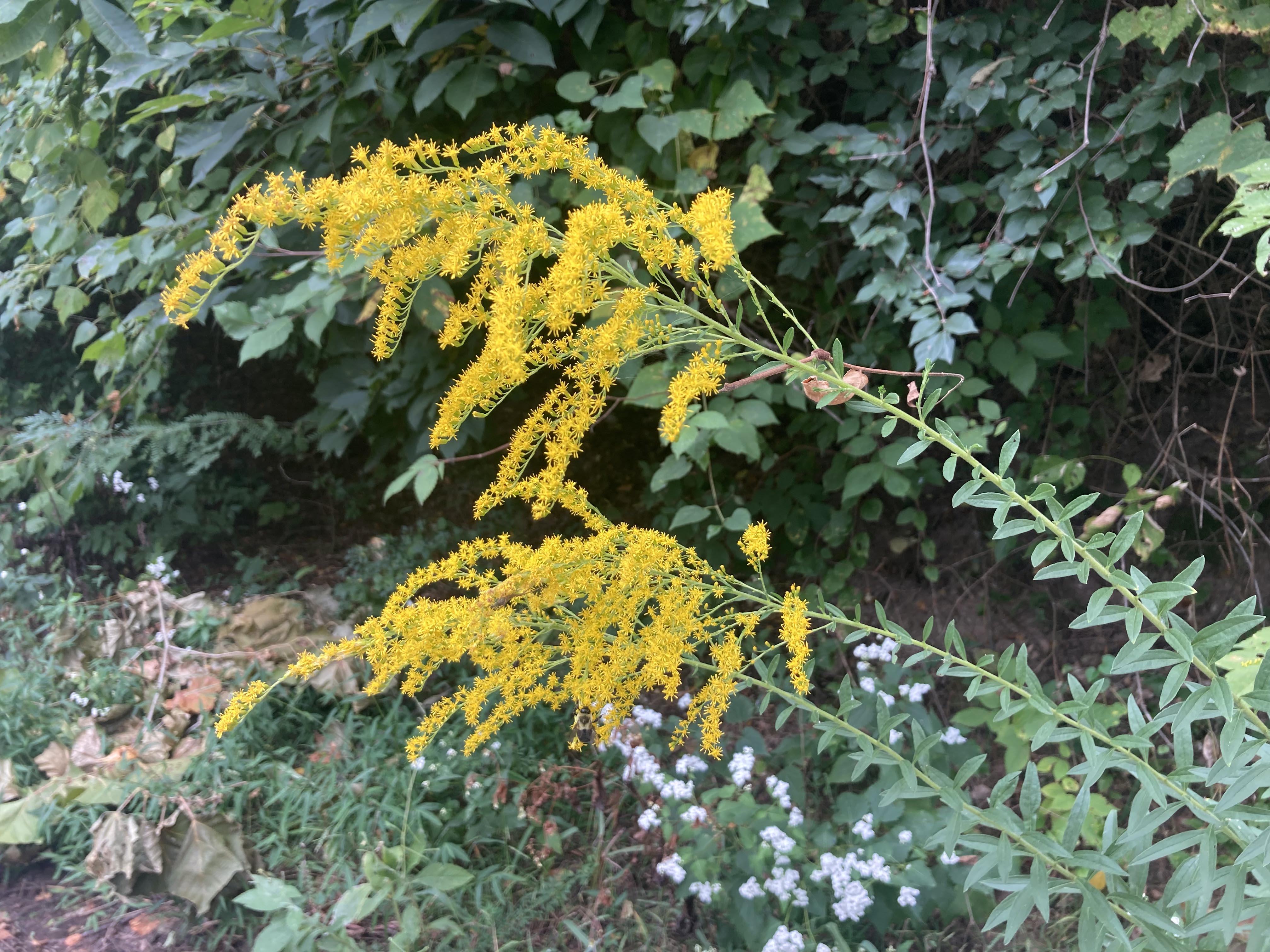Goldenrods of Arkansas
Contact
University of Arkansas System Division of Agriculture
Cooperative Extension Service
2301 S. University Ave.
Little Rock, AR 72204

Goldenrods of Arkansas
Goldenrods are everywhere this time of year. Once in a while, I get the urge to try to learn to identify them. Though that seems like a simple enough task, it is surprisingly challenging. Arkansas is said to have 34 species of Solidago — the genus name for the group — and many look a lot alike. Each fall I add to my collection of goldenrod photos, some of which I’ve been able to identify, while others await a proper identification.
For even the casual observer it is obvious that goldenrods dominate the roadside flora of much of Arkansas from August through frost. They belong to the aster family with near worldwide distribution with 80 of the 120 described species found in North America. As a group, they prefer a prairie habitat but have evolved to live in any number of niche environments.
Goldenrods are perennial herbs that range in size from creepers to shoulder-high. Most, especially the species that prefer prairie and roadside sites, are strongly rhizomatous and form large colonies. All are classic short day plants with blooms produced in late summer into the fall. The flower trusses are almost always borne atop unbranched stems. I could launch into a description of the flowers but that even bores me, so suffice it to say the time of bloom and shape of the truss are important features used in species differentiation.
Fall brings on lots of runny eyes and sneezing, and because goldenrods are the most visible roadside wildflower, they have been wrongly associated with the fall allergy season. Goldenrod pollen is large and sticky, not small and wind-borne like that of ragweed, the true culprit. Goldenrod flowers are a magnet for insect activity. A few days ago we counted half a dozen species of insects working the blooms of a Solidago rigida plant including flies, beetles, wasps and butterflies.
Goldenrod seeds are tiny and produced with a white sail that allows them to blow about freely in the wind. Small birds - goldfinches, native sparrows and the like - feed on them.
Deer are said to browse on goldenrod foliage, but I had one native plant guru tell me that goldenrods tend to take over-grazed pastures because cattle (and buffalo) won’t eat it. This is probably because many species produce a latex compound in the leaves that can be made into a natural rubber.
During World War I the price of natural rubber soared, causing Henry Ford to contact his friend Thomas Edison and ask him to see if any of our native plants could be used as a source of rubber. Of the plants he tested, he found several goldenrod species contained latex compounds. One species had over 6 percent in the leaves. But synthetic rubber was produced in the lab and both Ford and Edison passed during World War II, so nothing ever came of this interesting discovery.
Darwin used finches and the shape of their beaks to help define the evolutionary process and explain how new species arose. Goldenrods have evolved, adapted and expanded their range but the process is not so clearly understood as it is with Darwin’s finches. The base number for Solidago is nine sets of chromosomes, but relatively few species actually have this magic number in each cell nucleus. Instead, many forms of polyploidy (increasing the number of chromosomes) are found. The range of increase is often doubling (diploid) or tripling (tripling) but frequently much higher with some species having as many as 12 copies of the chromosomes in each cell. To make matters even worse, the polidy level within a species may also be different, which leads to different physical characteristics of the plants. Should two different species with the same number of chromosomes happen to swap pollen, new species can emerge. Most confusing.
Authors of wildflower books often use the “I don’t want to open that can of worms” approach and only show a couple of species of goldenrods. Until recently most seemed to indicate that the common roadside goldenrod in Arkansas was Solidago canadensis, but now we know that this species is found north of us while Solidago altissima, the tall goldenrod, is really what grows here. My quest to understand these plants continues, and though progress is slow, it is moving in the right direction.
